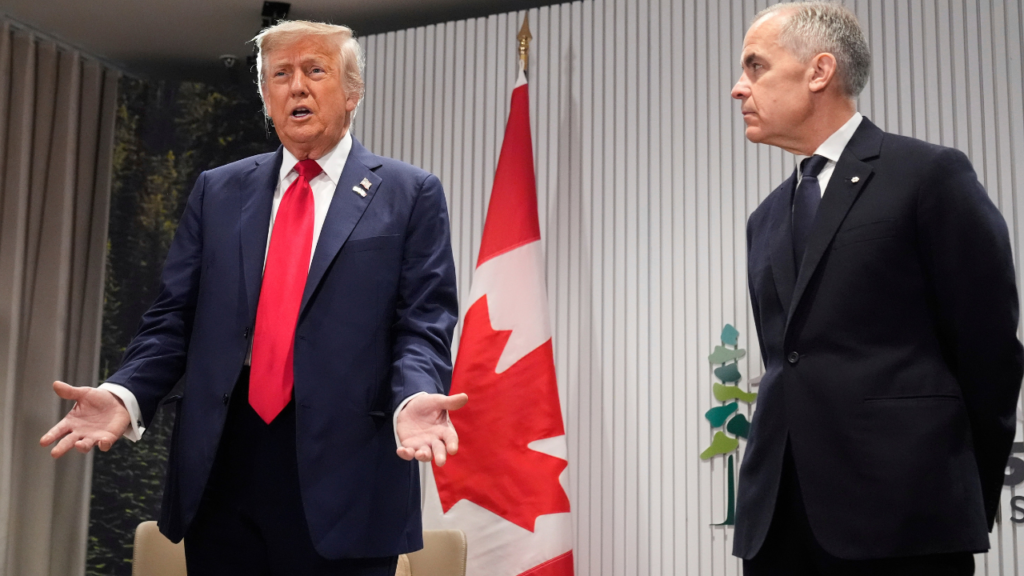The U.S. automotive industry is grappling with significant disruptions following the government’s imposition of 25% tariffs on foreign-made cars and components. These tariffs have introduced a wave of uncertainty, affecting manufacturers, consumers, and the broader economy.
General Motors: A Case Study in Volatility
Withdrawal of 2025 Earnings Forecast
General Motors (GM), one of the nation’s leading automakers, has withdrawn its 2025 annual earnings forecast. The company cited the unpredictable impact of the new tariffs as a primary reason for this decision. Despite a strong performance in the first quarter, GM reported a 6.6% decline in net income, underscoring the financial strain imposed by the tariffs.
Immediate Financial Repercussions
The tariffs have not only affected GM’s earnings projections but have also led to tangible financial setbacks. The increased cost of imported components has disrupted supply chains and escalated production costs, compelling GM to reassess its financial strategies and operational plans.
Consumer Behavior: Racing Against Price Hikes
Surge in Vehicle Purchases
Anticipating future price increases due to the tariffs, consumers have accelerated their vehicle purchases. This proactive buying behavior has led to a notable uptick in U.S. vehicle deliveries, with April witnessing a year-over-year increase of over 20%.
Implications for the Market
While this surge provides a temporary boost to sales figures, it also indicates underlying consumer anxiety. The rush to purchase vehicles before prices escalate reflects concerns about affordability and market stability in the coming months.
Tariffs Broader Industry Impact: A Chain Reaction
Strain on Supply Chains
The 25% tariffs have disrupted established supply chains, particularly for manufacturers relying on imported components. This disruption has led to production delays and increased costs, compelling companies to seek alternative sourcing strategies.
Price Increases Across the Board
The financial burden of the tariffs is being transferred to consumers. Analysts estimate that new car prices could rise by several thousand dollars, depending on the model and the extent of imported components. This price escalation may deter potential buyers and dampen overall demand.
Tariffs Policy Responses: Attempts to Mitigate the Impact
Government Measures
In response to industry concerns, the U.S. government has introduced measures aimed at alleviating the tariffs’ impact. These include credits and relief for automakers, particularly those assembling vehicles domestically. However, the effectiveness of these measures remains to be seen.
Industry Advocacy
Automakers and industry groups have actively lobbied for policy adjustments, highlighting the tariffs’ detrimental effects on competitiveness and employment. Their advocacy underscores the need for a balanced approach that protects domestic interests without stifling industry growth.
Long-Term Outlook: Navigating an Uncertain Future
Strategic Shifts
In light of the tariffs, automakers are reevaluating their long-term strategies. This includes exploring domestic production options, diversifying supply chains, and investing in alternative technologies to mitigate reliance on imported components.
Potential Market Realignments
The ongoing trade tensions may lead to a realignment of the global automotive market. Manufacturers might shift focus to markets with more favorable trade conditions, potentially impacting the U.S.’s position in the global automotive landscape.
Conclusion: A Pivotal Moment for the Automotive Industry
The imposition of 25% tariffs on foreign-made cars and components has ushered in a period of uncertainty for the U.S. automotive industry. While immediate effects include financial strain on manufacturers and altered consumer behavior, the long-term implications could reshape the industry’s structure and global standing. Navigating this complex landscape will require strategic foresight, policy adaptability, and collaborative efforts between industry stakeholders and policymakers.



















